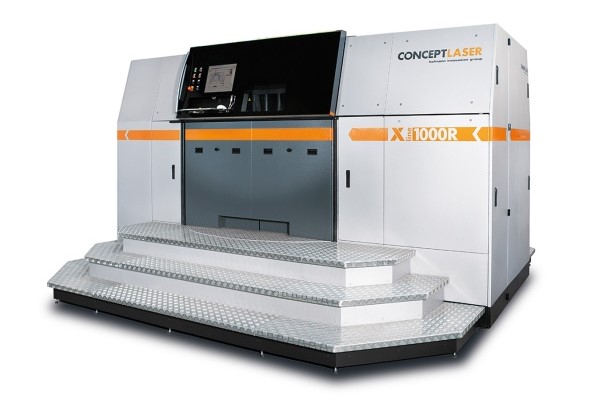Oak Ridge National Laboratory (ORNL), together with additive manufacturing data specialist Senvol, has published a technical report on pedigreed data collection for industrial 3D printing.
The findings are the result of a two-year cooperative R&D agreement that saw ORNL working with Senvol to evaluate and refine the company’s standard operating procedure (SOP), a 100+ page manual detailing how to generate pedigreed data on the effects of process parameters. Once ORNL’s independent feedback was integrated into the SOP, the partners evaluated the document’s efficacy by using it to 3D print test builds on a Concept Laser X Line 1000R PBF 3D printer with Al-Si-Mg alloy.
Ryan Dehoff, secure and digital manufacturing lead at ORNL, stated, “The impact of this project will be significant in helping the additive manufacturing industry understand the necessity of producing pedigree data. We’ve demonstrated that pedigree data collection is critical to understanding the quality of additive manufacturing materials, and ensured that all of the nuanced data required to accurately extract information is captured.”

What is Senvol’s standard operating procedure?
The SOP is intended to help organizations ensure that every process parameter data generation project follows a tried and tested standard procedure. It outlines examples of complexities that need to be thought out such as the specimen geometries, the number of specimens to be 3D printed, and how to capture the effects of all of the process variables being tested. The document also provides guidance on test plan procedures, material handling, and even which industry standards need to be followed.
Peeyush Nandwana, a powder metals researcher at ORNL, explains, “This SOP covers topics such as collecting appropriate geometric information, key processing parameters for the AM technology, and any key material testing protocols. These are critical in terms of understanding the true material response, especially when dealing with multivariate analysis approaches in which several of these variables may be interlinked.”
72 tensile bars
To test the SOP’s efficacy, the partners 3D printed 72 tensile bar samples with varying print parameters such as laser power, scan speed, and layer thickness. The parts were then subjected to tensile testing procedures to determine their mechanical properties. This allowed the partners to input the tensile data into Senvol ML – the company’s machine learning software – in a bid to determine the correlation between the parameters and the subsequent tensile strengths of the 3D printed aluminum bars.
Key takeaways from the testing include a negative correlation between layer thickness and elongation. On the other hand, as laser energy density increased, elongation also increased, cementing the theory that the scatter in elongation is due to the presence of pores and defects in parts. Interestingly, the yield and ultimate tensile strengths of the aluminum bars had no correlation with either the layer thickness or energy density, indicating that the strength properties of 3D printed parts are more dependent on microstructure.
Annie Wang, Senvol’s President, concludes, “ORNL has distinguished expertise in additive manufacturing, and so we were very pleased to work with them on this project. Collectively we were able to show that generating the data at the scale in this work and leveraging the use of correlation functions from Senvol’s machine learning software, Senvol ML, can provide the basis for isolating the impacts of different variables on resulting material properties and performance. This can be particularly helpful in developing process parameters for new materials and machines.”

Further details of the SOP and the two-year project can be found in the report titled ‘Collection of High Pedigree AM Data for Data Analysis and Correlation’.
Understanding the importance of data generation, a team of researchers from the FAMU-FSU College of Engineering recently developed an ideal parameter set for the 3D printing of graphene-based structures. After a series of test runs, the team found that factors such as print pressure and nozzle diameter had an effect on the composite’s properties.
Elsewhere, in the aerospace sector, 3D printer manufacturer SLM Solutions recently partnered with manufacturing conglomerate Honeywell to produce a parameter set for 3D printing aluminum F357 via laser-PBF. Developed as part of the companies’ ongoing partnership, the material reportedly enables 3D printed parts with properties superior to those of die-cast components.
Subscribe to the 3D Printing Industry newsletter for the latest news in additive manufacturing. You can also stay connected by following us on Twitter and liking us on Facebook.
Looking for a career in additive manufacturing? Visit 3D Printing Jobs for a selection of roles in the industry.
Featured image shows the build chamber of a Concept Laser X Line 1000R. Photo via Monash University.



